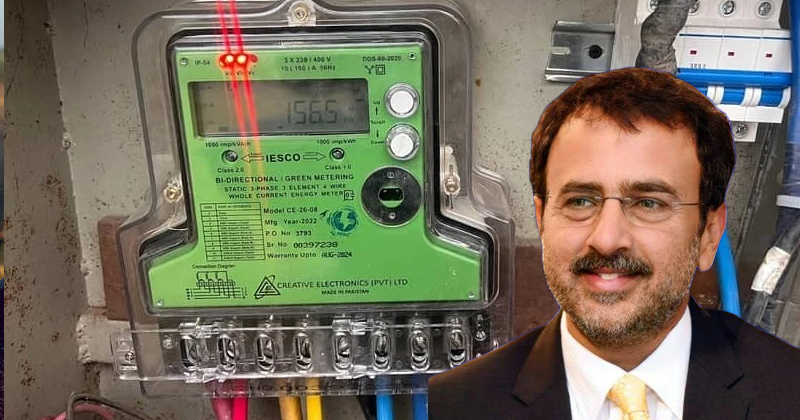
Fighting giants
On one hand we have Apple, a company that continued to build on its iPod and iTunes empire to regenerate its computer business and managed to rewrite the history of the smartphone and tablet in the process in just a few years. Apple’s makes only a handful of iOS mobile products, all highly profitable for the company, which isn’t just a PC maker anymore.
On the other hand we have Google, the desktop search giant that realized mobile devices will play a major role in our future and created its own mobile OS – making it open source from the get go – hoping that one day when Internet users will go to their mobile smart device for online searches that Android will help it retain its online search crown.
We’re looking at two completely business strategies that work for each company. Android is the most popular mobile OS while iOS is the most profitable one, with Google and Apple ruling the current mobile landscape.
Companies like Microsoft, Nokia and RIM are playing catch up, while others are working on emerging competing mobile operating systems hoping there’s a place for them at the mobile table. Among the latter ones we also happen to have the recently unveiled Ubuntu smartphone from Canonical, a company that seems ready to take a popular desktop OS and turn into a popular mobile OS.
Whether you’re a veteran smartphone user, or you’re just getting ready to buy your first such device, we’ll tell you all you need to know about Ubuntu and why it’s definitely an exciting project to follow.
The same platform on every device
Ubuntu is a very popular Linux-based computer OS, and Canonical wants now to offer Ubuntu users the same computing experience no matter what device they’re on, whether a computer, a smartphone, a tablet or a TV.

But Ubuntu will offer you the same experience on the smartphone, tablet, PC and TV, which is definitely something plenty of smart device users will appreciate.
Ubuntu smartphone hardware
So who’s making the Ubuntu smartphone you’ll ask. Is it Samsung? Maybe LG or Sony? It can’t be Apple and Motorola, right?
Well, we have some very good news for you. Any existing Android smartphone out there can be turned into an Ubuntu handset, according to the official presentation of Canonical’s Mark Shuttleworth. That means Android hardcore users who love to customize their Android handsets will definitely want to try a new open source OS on their devices, Ubuntu. That also means that you won’t run Ubuntu on top of Android – it’s not Ubuntu for Android the app – but you’ll run Ubuntu OS instead of Android OS, not that we’d recommend you install any unofficial software on your Android device(s)
In fact it’s probably those users that Canonical will be targeting first, people interested in open source ecosystems and even more interested in customizing their mobile and desktop experience.
Obviously, older Android handsets will not be compatible with Ubuntu, and we already have system requirements from Canonical, as follows:
Entry-level Ubuntu “superphone”
- 1GHz Cortex A9 processor
- 512MB-1GB of RAM
- 4/8GB storage
- microSD support
- multitouch support
High-end Ubuntu “superphone”
- Quad-core A9 or Intel Atom processor
- At least 1GB of RAM
- At least 32GB of storage
- microSD support
- multitouch support
- desktop convergence support

What’s not clear though is what OEMs will be the first to make a pure Ubuntu handset – you know, not an Android device that’s used to run Ubuntu. It will certainly be interesting to see whether OEMs and/or carriers are ready to support the new kind on the block.
Don’t get me wrong, the Ubuntu smartphone (and tablet for that matter) sounds like a great device, certainly a welcomed addition to the current mobile ecosystem that has Google and Apple at the top. But Ubuntu will not, at least at first, be able to replace either Google or Apple. It won’t displace Google from the number one position when it comes to mobile OS market share and it won’t steal Apple’s increasing pile of gold.
But if you’re Microsoft, Nokia, RIM, Samsung’s Tizen development team or any other company that wants to make money in this highly lucrative business, then you should be worried by Ubuntu, a new mobile OS that could be gunning for your particular position.
Ubuntu smartphone software
So the hardware of an Ubuntu phone is pretty decent you say, but what about software? How will Canonical replicate the Ubuntu desktop experience on a mobile device that has a smaller, and therefore more limited, display?
In short, by making the most of the display area!
Canonical plans to utilize the four edges of the display to bring the Ubuntu smartphone to life, while ditching Home and other buttons that would otherwise clutter the display. By doing all this, the company wants to offer Ubuntu fans an immersive, fast mobile experience that would be very familiar to them, since, at the end of the day, they’d be using the same OS that’s already running on their desktops.
Let’s take a look at the various aspects of the Ubuntu smartphone OS, shall we?
Lock/Welcome Screen
The lock screen isn’t a lock screen per se, as it doesn’t lock you out of the smartphone. Sure, there is a lock screen that secures your device, but it also offers plenty of information and lets the users get to his or her favorite apps and to the home screen in an instant.
In fact, the lock screen is an artsy Welcome Screen, as Canonical explains:
Ubuntu reflects you with personalised graphics that adorn the phone’s welcome screen. Designed by artists who specialise in creating beautiful visualisations of complex data, the welcome screen evolves as you use the phone to be unique and completely personal. This isn’t a lock screen, it’s a sign saying: “come in”. A signature flourish for Ubuntu and for you.
Left Edge
Swipe your finger from the left and a vertical menu will show you your most used apps, including a button that takes you to the home screen. You can go to any app on the phones from the left edge and you can do so straight from the lock screen.

Right Edge
Let’s call this one multitasking, because that’s what this edge does. Simply swipe from the right to navigate between the apps currently running to get to the one you need. It all looks very neat and very fast in the demo video, let’s hope it will all be as smooth in real life as well.

We’re not going to talk about notifications available for apps, but something that’s interesting about the top edge. Ubuntu will let you hide the status bar whenever you like, in order to free up more screen real estate for the apps you’re running.

Bottom Edge
It’s not just the status bar that can be hidden, but the bottom in-app menu will perform the same trick as well. That way, the app you want to experience in full screen will run in full screen on the Ubuntu smartphone. Just swipe that app menu up and down to access the controls whenever you have to.

As we said before, Canonical wants you to experience the same OS across devices, so all you’ll need to do to turn your smartphone into a PC will be to dock it and enjoy an Ubuntu desktop experience, provided your smartphone’s harware supports this feature
The cloud
Since it’s Ubuntu, you will have access to your Ubuntu One cloud contents on the handset, not that’s something you wouldn’t have expected, is it?
Digital store
The modern smartphone is nothing without a well-established digital content store that offers access to apps and other content.
Apps
The Ubuntu smartphone will support both HTML5-based web apps and native apps, with developers able to choose which way to go. In case you want to develop “rich [Ubuntu] applications with gorgeous movement and transitions, and graphics-heavy games” then you’ll need to download the QML developer toolkit and start experimenting instead of choosing the faster web app route.
But we have no idea how Canonical will manage its own app store, which is an essential component for the Ubuntu smartphone. Sure, it won’t be able to take on the App Store or the Play Store, but as long as Canonical makes it easy for developers to bring their apps to this new mobile world, and as long as users embrace the new mobile OS, the digital store will grow.
Other digital content
It’s clear from Canonical’s official presentation that it definitely wants to offer the user a desktop experience on the smartphone, which includes accessing plenty of digital content in addition to apps. While it’s not clear whether Canonical will sell movies or books, it will however offer them music via the Ubuntu One Music Store to Ubuntu smartphone owners. But the company seems also ready to offer directions to other purchasable digital content right on the phone, with Amazon named as one source for such products.
The Search factor
Unlike Google, Canonical isn’t interested in becoming the king of the Search hill – or is it? – but Shuttleworth did stress on the importance of Search in Ubuntu. Users will be able to quickly find what they’re looking for whether on the phone or online, and Ubuntu will learn where to look to provide the best results. Does that sound familiar? Will Ubuntu offer Google Now- and Siri-like virtual assistant features? Time will certainly tell!
Open source and money
Just like Android, Ubuntu for mobile devices will be open source, so how is Canonical going to make money off this thing?
Google makes money from mobile ads, which is something Canonical may also be interested in getting more familiar with. Sure, the company already displays ads in Unity Dash on Ubuntu 12.10, but it’s definitely not Google when it comes to ads revenue.
Canonical also makes money from Ubuntu-related services and technical support, but it’s unclear how it plans to increase revenues from its Ubuntu smartphone endeavor. And money is important to keep such a business afloat and thriving – I’m obviously referring to Canonical’s mobile division.
What’s clear is that Canonical wants to pitch Ubuntu smartphones both to corporate clients but also to regular consumers, so it certainly seems to be very interested in making this whole new thing work in its favor.
OS updates, OEMs and carriers
We all know how carriers and OEMs delay Android updates, but will the same thing happen with Ubuntu? Probably not as long as you’re going to install Ubuntu on a handset that can run Android.

Since we did talk about money for Canonical before, we can’t help but notice that for some carriers and OEMs it will make plenty of sense to sell Ubuntu smartphones in the future, especially in developing markets, although, like we said before, that doesn’t mean they’ll immediately embrace Ubuntu.
Carriers should be happy to have another potential best-seller OS on their hands not to mention a new iPhone rival that will help them save iPhone subsidy money, while certain OEMs could be interested in putting their eggs in more than one open source basket and invest in both Android and Ubuntu device development.
But so far neither OEMs nor carriers are saying anything about future Ubuntu phones and/or tablets.
Ubuntu for Android
While not an Ubuntu smartphone, Android fans can experiment Ubuntu for Android, and merge an Ubuntu PC with their favorite Android handset – this video explains it perfectly:
Conclusion
On paper, and in the video below, the Ubuntu smartphone sounds like a very daring project. Will it succeed or fail? It’s too early to tell but we’re definitely going to follow it closely.
original article
Bonus: Hand on review by engadget. ubuntu running on Galaxy nexus

































